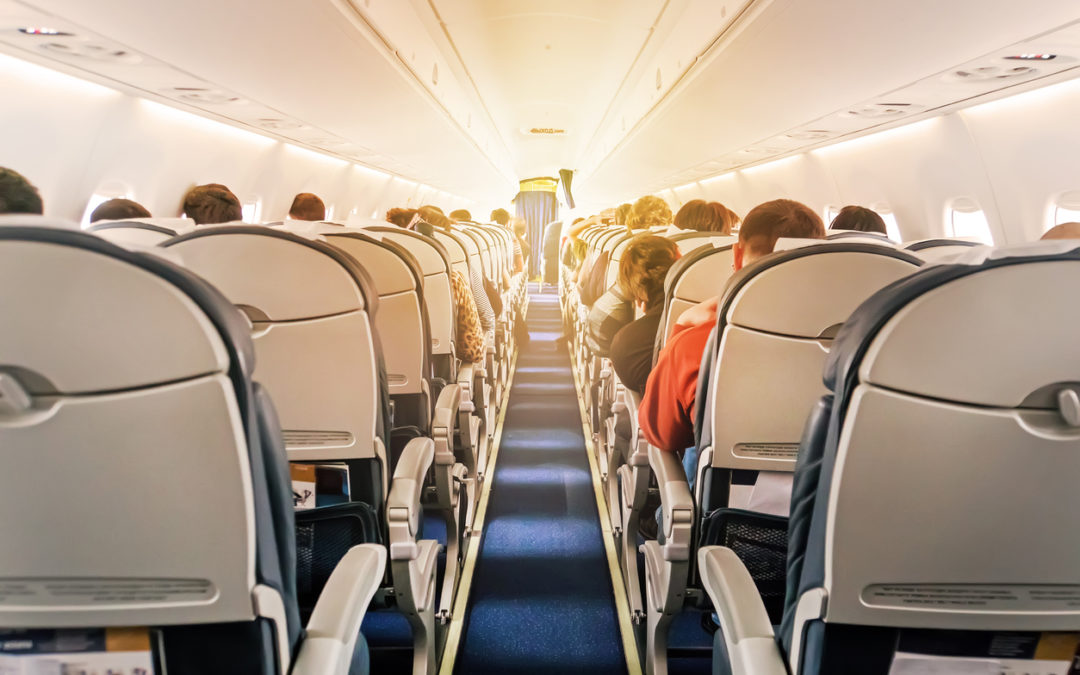Lawsuits have been filed by people who breathed toxic airplane cabin air and suffered from “Aerotoxic Syndrome” or other severe side effects.
What You Can Do & How We Can Help
The Schmidt Firm, PLLC is currently accepting Aerotoxic Syndrome induced injury cases in all 50 states. If you or somebody you know breathed toxic airplane cabin air during a “fume event,” you should contact our lawyers immediately for a free case consultation. Please use the form below to contact our Class Action Litigation Group or call toll free 24 hours a day at (866) 920-0753.
UPDATE: Lawsuit Filed by Passenger Who Breathed Toxic Airplane Cabin Air
In December 2020, a lawsuit was filed by a woman who was hospitalized with health problems after a fume event on a Spirit Airlines flight in 2018. The pilots were forced to make an emergency landing after a “fetid, noxious, burning odor” filled the cabin, causing passengers to suffer from headaches, nausea, and trouble breathing.
What is a Fume Event?
Most aircraft built since the 1960s are designed with a “bleed air” system, which means the air that circulates throughout the cabin passes through the jet engines. Unfortunately, highly-toxic fumes from engine oil and hydraulic fluid sometimes contaminate the “bleed air” that is breathed all aboard. This is a fume event.
Many Jet Airliners Unequipped to Filter Toxic Cabin Air
How To Recognize A Fume Event
Jet engine oil fumes might smell like “dirty socks,” musty, moldy, or unpleasant. Hydraulic fluid fumes often have a strong chemical smell. Both types of fumes may contain odorless carbon monoxide gas.
When fumes from jet engine oil and hydraulic fluid contaminate the cabin air supply on an airplane, you might notice an unusual smell, see smoke, or a haze in the air — but not always. Some fume events are invisible and odorless because they involve carbon monoxide gas.
Exposure to Carbon Monoxide Gas
Carbon monoxide poisoning is especially dangerous on an airplane, where the air contains less oxygen than on the ground. The symptoms may include dizziness, fainting, headache, and slower thoughts. In severe cases, pilots may be unable to fly the plane or land safely.
What Dangerous Chemicals Cause Toxic Cabin Air?
Jet engines get extremely hot, so they need to use special synthetic oils. These oils may contain up to 10% TriCresyl Phosphates (TCPs), which are neurotoxic chemicals in the same family as sarin nerve gas. Hydraulic fluid fumes may contain highly-toxic chemicals, such as TriButyl Phosphates (TBPs) and Triphenyl Phosphates. De-icing fluids contain ethylene and propyl glycols.
Early Signs of Aerotoxic Syndrome
The symptoms of exposure to a single “fume event” may include:
- Coughing
- Headaches
- Breathing difficulties
- Muscle aches
- Exhaustion
- Feeling like you have “jet lag”
Severe Symptoms of Aerotoxic Syndrome
People who breathe toxic airplane cabin air repeatedly, or during one major fume event, may develop symptoms like:
- Neurological symptoms
- Persistent cough
- Breathing problems
- Vision problems
- Fatigue
- Lack of concentration
- Memory loss
- Brain damage
- Loss of balance
- Emotional problems (depression, etc.)
Can I Join a Class Action Lawsuit?
Many lawsuits have been filed by people who breathed toxic cabin air, but not as part of a class action. Instead, they are individual lawsuits that have been filed against airlines and aircraft manufacturers by people who are seeking compensation for serious health problems.
What is the Problem?
Class actions can have major disadvantages for individuals with severe health problems. For example, even if money is awarded through a lawsuit settlement, everyone who qualifies to join the class action will gets to share the payout. This is why many class actions end in very small payouts for each person.
Why Our Law Firm is Filing Individual Lawsuits as Opposed to a Class Action
Instead of a class action, our lawyers are filing individual lawsuits for people who developed Aerotoxic Syndrome after breathing toxic airplane cabin air during “fume events.” You may qualify to file a lawsuit if you were injured while working as a pilot or flight attendant, or flew as a passenger on a flight in which a fume event occurred.
Do I have a Toxic Airplane Cabin Air Class Action Lawsuit?
The Schmidt Firm, PLLC is currently accepting Aerotoxic Syndrome induced injury cases in all 50 states. If you or somebody you know breathed toxic airplane cabin air during a “fume event,” you should contact our lawyers immediately for a free case consultation. Please use the form below to contact our Class Action Litigation Group or call toll free 24 hours a day at (866) 920-0753.
Attention Lawyers: We consider a referral from another law firm to be one of the greatest compliments. If your firm is interested in referring us a case or for us to send you a list of previous award judgments and/or average referral fees, please visit the Lawyer Referral section of our website.


 The Schmidt Firm, PLLC has been recognized as one of the nation’s leading plaintiffs' law firms and handles cases in all 50 states. We are very proud of our legal achievements, but equally self-respecting of our firm's reputation for providing personal attention to each and every client we represent.
The Schmidt Firm, PLLC has been recognized as one of the nation’s leading plaintiffs' law firms and handles cases in all 50 states. We are very proud of our legal achievements, but equally self-respecting of our firm's reputation for providing personal attention to each and every client we represent.

